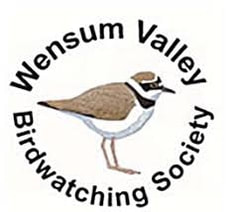|
Speaker: Allan Hale Reporter: Sue Gale Members were delighted as always with Allan’s great photographs and detailed knowledge of the birds to be found at Thunder Cape, but I think what most impressed us was the adventurous nature of the visits made by Allan and often also Ray Gribble. It’s one thing to travel widely, as we know they have, and be driven about by a guide to see as many bird species as possible, but it’s quite another to trek 9 miles over boulders, through woods and up hills to reach an off-grid wooden hut or two – home for two or three weeks! To be fair, for several visits a boat trip instead of the hike was available, but only if the weather was calm.
Which was about half the time it seems. The time to go was either Spring or Autumn, and in Spring the weather could be anything, including deep snow! The Observatory is situated at the end of a cape reaching out into the western end of Lake Superior, the largest of the Great Lakes. It is in Canada, in the Sleeping Giant National Park, but very close to the US border. Once arrived at the observatory visitors become part of the team, doing their equal share of migration monitoring and bird ringing duties. The only links with the outside world are that boat and the marine radio. Solar power is enough to give some light and to power the computer, where everything is recorded. Food supplies all come in the boat, which means in rough weather food can get pretty scarce. Rice and beans anyone? The birds seen during these visits are very seasonally dependent, so we looked at the Spring birds first. There are 16 different species of Sparrow caught and ringed here, and Allan showed us each one. There were often very small differences, but he was quite at home with identifying them all. They varied in size between 10g and 40g, and in frequency of occurrence, with the Chipping Sparrow being the most common bird ringed in Spring. The rarest, Brewer’s Sparrow, was ringed when Allan was on duty, and was a first for Ontario. Birds were trapped in two Heligoland traps and a variety of mist nest – all named so that precise records can be kept. (Recording is so precise that even the ‘outhouse’ – the loo shed – had its own list.) There are very few waders to be seen as there are no shallow edges or muddy areas for them to feed, but plenty of water birds, often familiar ones like Great Northern Divers. Other wildlife observed included butterflies, like the American versions of Swallowtail and Comma, and also of course the Monarch. Mammals include otters, beavers and black bears. The latter do come to the Observatory and on one memorable night one must have come inside the sleeping quarters because there was dribble on the inside of the window! Ray had slept through it all but Allan had been awakened by the stumbling about, only thinking it was Ray paying a visit to the outhouse! They were careful to bar the doors after that. Alan has seen Chipmunks, Skunks and various species of squirrel, and also a Porcupine. This was a bit of a nuisance because it was eating the wood in the woodstore and then even began to eat the cabin! It had to be removed and released far from the observatory. Perhaps the most remarkable sighting was a Lynx – a species they ‘don’t get any of here’. We saw pictures of the many different colourful warblers that are found mostly in the summer months – so much prettier than many of the warblers we see here. Allan showed us the ringing and recording methods using a Rose-breasted Grosbeak as an example. He showed us what they weighed and measured and how they aged the bird by its feathers. Then on to the American Thrushes. A new and helpful piece of information for me was that if a thrush has a white wing bar it’s an American one. Some of my favourite birds are the Woodpeckers, but Alan may not feel the same. They caught and ringed a Pileated Woodpecker, which is quite a large bird, and it decided to drum on Alan’s nose. It was quite bloodied! Undoubtedly Allan’s favourite birds were the Saw Whet Owls that come through the Cape in large numbers in Autumn. They are so engaging, and make for some wonderful photos. The record during Allan’s visits was 126 owls ringed in one night. They were obviously a great enough attraction to keep him going there. Bird ringing in Canada and the US is much more regulated than in this country. Ringing can only be done as part of a registered organisation, which means there are far fewer records than over here. However, if you travel to stay at one of the observatories the accommodation and food are free, in return for your participation in the work of the station. You even get a T-shirt if you stay long enough! So many thanks to Allan for all that work over the years and for telling us all about it in such an entertaining way.
0 Comments
Leave a Reply. |
Please feel free to read through our reports from our monthly indoor / online meetings. Archives
May 2024
Categories |

 RSS Feed
RSS Feed
